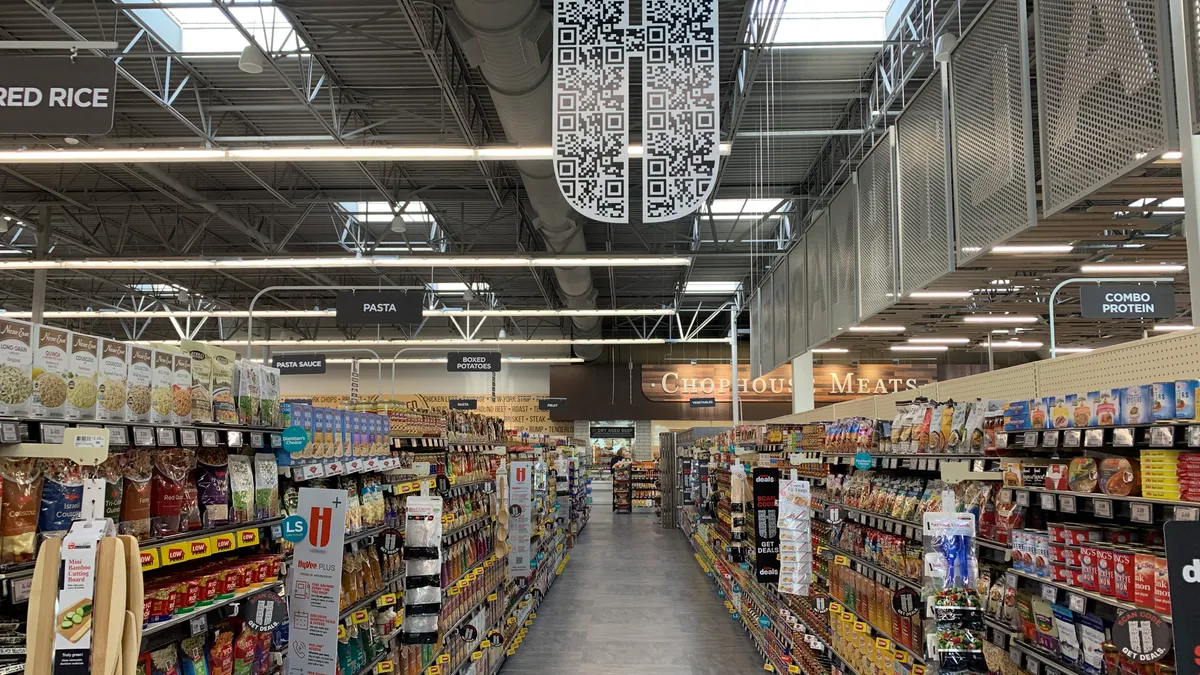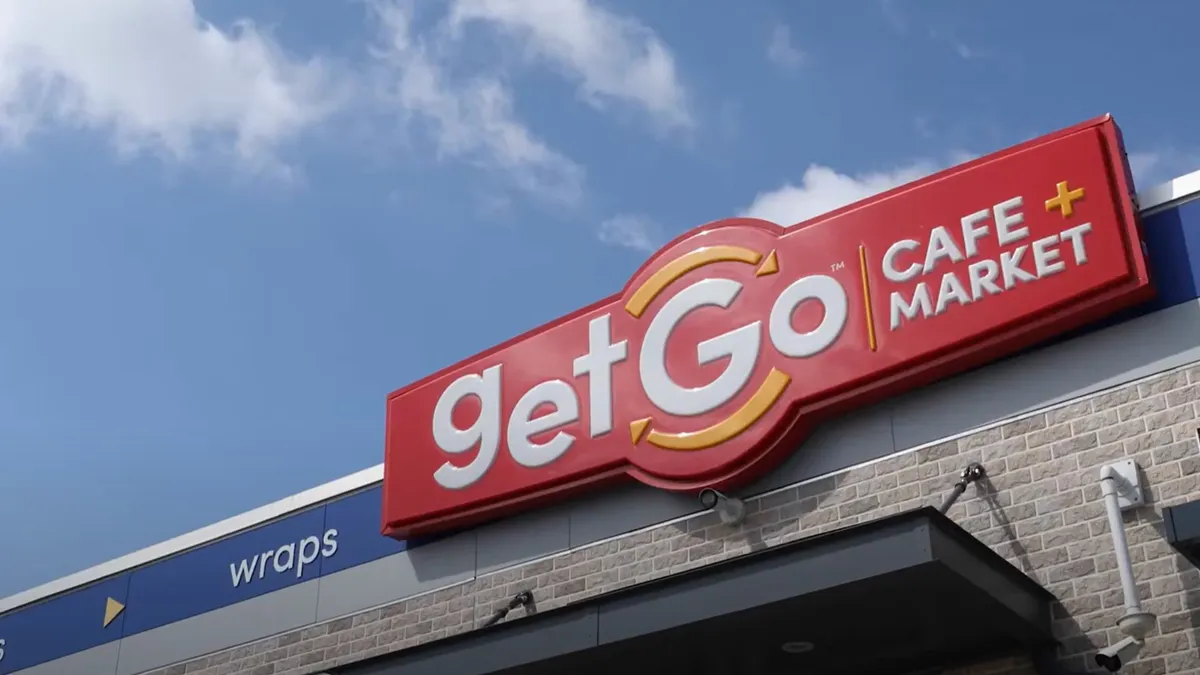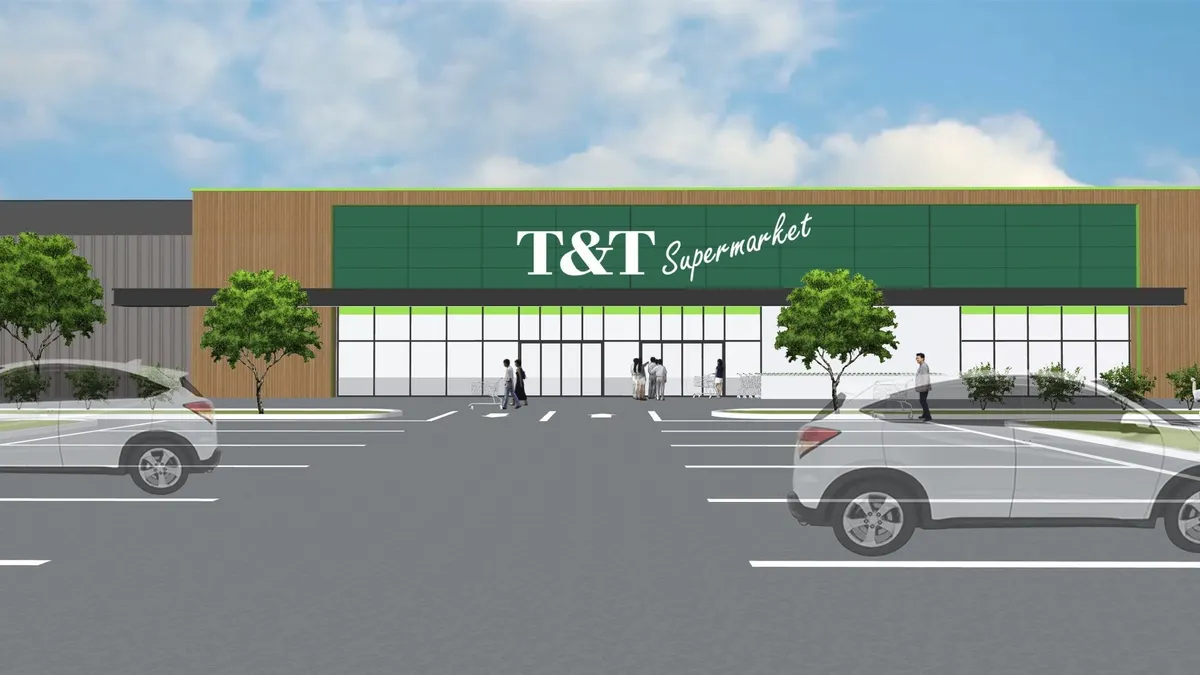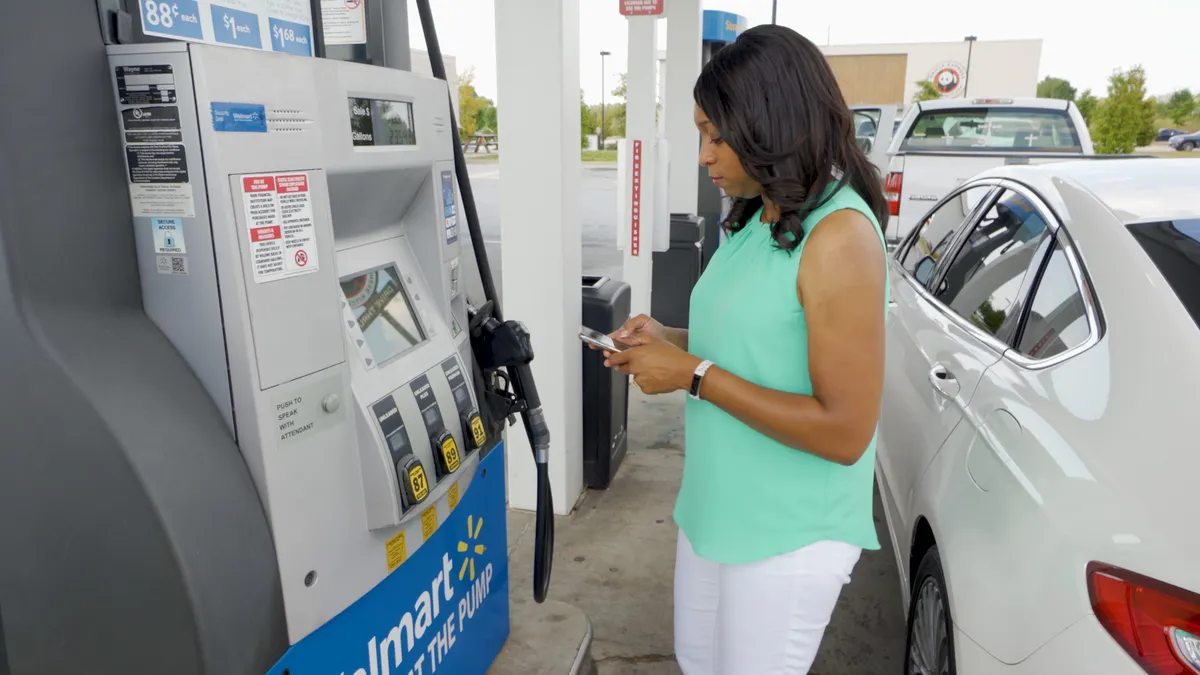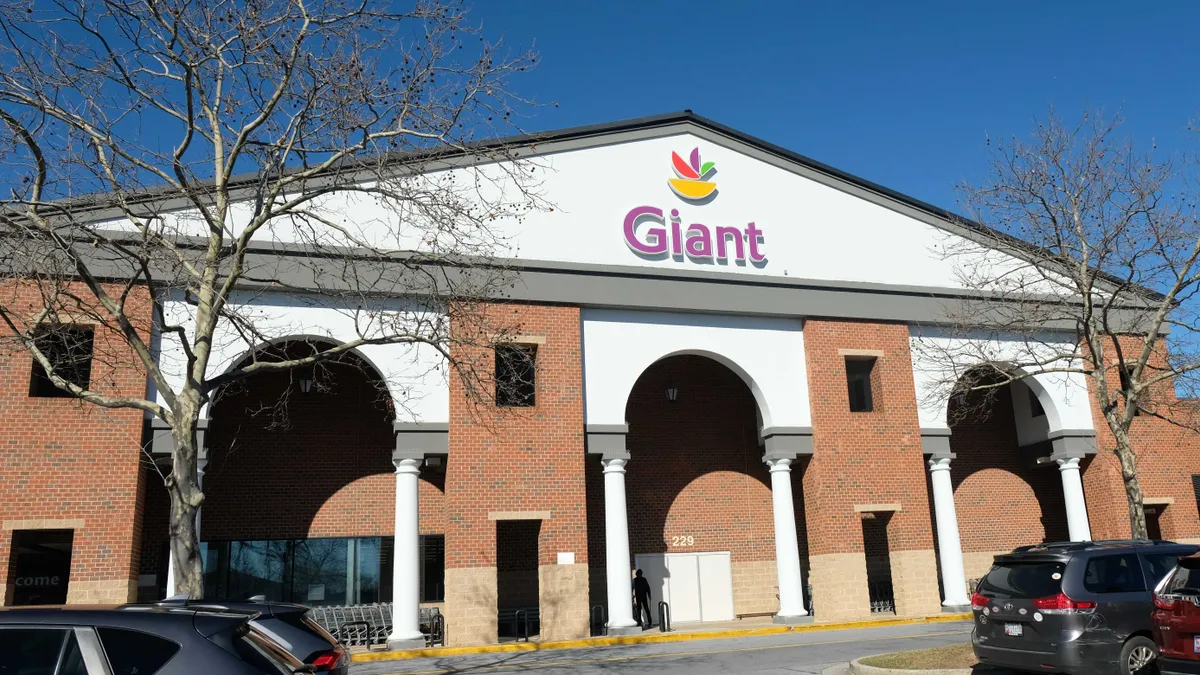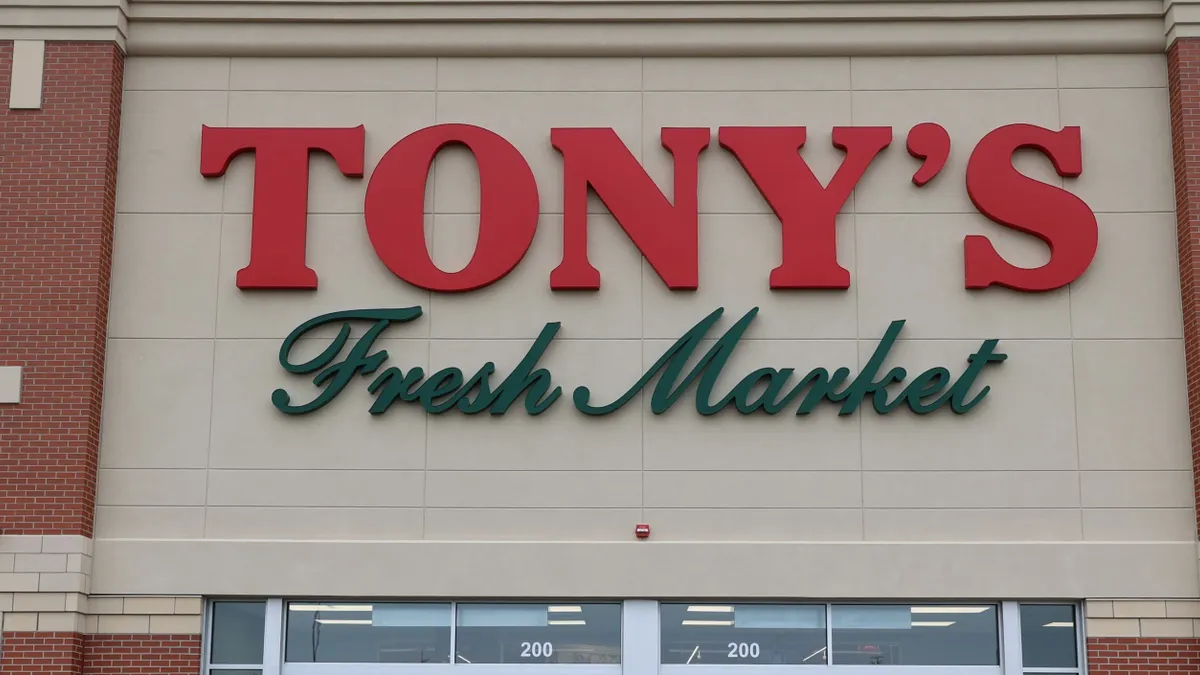At just 18,000 square feet, the fresh-focused grocery store Schnuck Markets debuted last month in Jasper, Indiana, is substantially smaller than the chain's traditional supermarkets. But the newly opened location could have a sizable impact on how the company builds new stores.
"Schnucks Fresh" is designed to retain the core elements that Schnucks has long employed at its traditional stores, which tend to be about 60,000 square feet, but with a pared-down variety of products that make it feasible for the store to operate in a community that is too small to support a full-sized Schnucks location, said Ted Schnuck, the great-grandson of the company's founder who was named Schnucks' executive vice president of supermarkets in July.
"It still has everything that you would want to complete your full shop," said Schnuck, who has served as vice president of Schnucks' fresh division since January and will fully assume his new post in October. "We have every category, for the most part … across not just food and beverage but also household care, drug, and health and beauty care. It may not be the depth of assortment [other stores have], but we're able to squeeze a lot into the 18,000-square-foot store."
Schnuck said St. Louis-based Schnucks concluded that Jasper's population had a shortage of grocery stores, and found that many local residents traveled about an hour to Evansville, Indiana, where the company has had a presence since 1977 and currently operates five full-size stores, to shop. Schnucks also operates a supermarket in Newburgh, Indiana, just outside Evansville.
"We still believe that convenience is ultimately one of the key purchase drivers and that customers want to be able to find all of what they need or nearly all of what they need at a single location," Schnuck said.
Schnucks' new store is located at the site of a former Cash Saver grocery store in Jasper’s Germantown Shopping Center. That store closed in late 2018, when the entities that owned it filed for Chapter 11 bankruptcy protection, citing "an extremely competitive marketplace," the Dubois County Herald reported.
Focusing on fresh items
A key aspect of the Schnucks Fresh store is its heavy focus on fresh products, like meat, produce and seafood, which Schnuck said is designed to appeal to shoppers who might not be able to find those items in other stores in the community.
"We saw the opportunity to serve more customers and to grow in the markets that we serve by finding this gap within the competitive landscape to downscale the size of the store appropriate for the size of the community, [and] to really put our focus on our fresh perimeter departments," Schnuck said.
Schnucks, which runs 111 stores in four Midwestern states, is considering building additional locations based on the new format, but hasn't decided if or when it might decide to do so, according to Schnuck.
"We do think this can be a mechanism to reach customers and towns similar to Jasper that may be a little bit smaller, maybe a little bit more rural, without convenient or local access to fresh food," he said.
A trend toward smaller grocery stores
Schnucks' decision to develop a grocery concept designed to fit into smaller spaces reflects an evolution in the alternative formats companies have developed in response to changing consumer tastes and shopping patterns, grocery industry experts said. Some of these nonstandard stores are designed to focus on a theme like convenience or health, while others, like Schnucks Fresh, are essentially miniature versions of traditional supermarkets.
"[Schnucks has] really followed the Aldi [and] Trader Joe's model that says that a supermarket does not need to have 35,000 SKUs in 45,000 to 55,000 square feet," said Burt Flickinger, managing director of supermarket advisory firm Strategic Resource Group. "By reducing the complexity and reducing the number of vendors as well as concomitantly reducing the number of sizes, you [can] actually profitably increase sales growth and market share."
Aldi's stores generally occupy about 16,000 square feet of space, while Trader Joe's stores also tend to be around that size, or even smaller.
At the heart of the grocery industry's increasing embrace of smaller stores is the fact that many shoppers — especially younger ones — place a high premium on speed and convenience when they purchase groceries, analysts pointed out.
That means that aside from market conditions that might make it difficult to justify operating a larger store from an economic perspective in some areas, grocers have to position themselves to satisfy consumers who don't want to spend the time it can take to walk a larger supermarket, said Arun Sundaram, an analyst at CFRA Research who follows the food retailing industry.
"The smallest formats provide an easy-to-shop environment where shoppers can see the entire grocery store when they walk in," Sundaram said, adding that by requiring retailers to pare down their assortments, smaller stores also make it easier for shoppers to make selections.
"People always equated big with sales, but they never equated big with liability. If you have a 65,000-square-foot store, you've got to generate a lot of money to make that work and make a profit."

Kevin Kelley
Co-founder and principal, Shook Kelley
Other grocers that have recently opened or are planning smaller format stores include Fareway, which opened an 8,000-square-foot store in Colfax, Iowa, in March, and Sprouts Farmers Market, which is rolling out new stores based on a box that is about 20% smaller than its traditional locations yet expected to generate the same amount of revenue.
More scaled-down stores are on the way
Another factor nudging traditional grocers toward smaller stores is the pressure retailers like Amazon and Costco have been placing on the center store, said Kevin Kelley, co-founder and principal of Shook Kelley, an architecture and design firm that works closely with grocers. The fact that consumers have more options than in the past to purchase many of the packaged goods they once relied on supermarkets means grocers have less need for space once seen as essential for supermarkets, he said.
Kelley said some retailers he works with have been looking for ways to use excess square footage in larger stores, with some deciding to sublease space to other merchants, build food halls or otherwise repurpose parts of their stores they no longer need.
"People always equated big with sales, but they never equated big with liability," Kelley said. "If you have a 65,000-square-foot store, you've got to generate a lot of money to make that work and make a profit."
Driven by their realization that the evolving retail landscape is changing what shoppers are looking for in grocery stores, Kelley said some retailers, including several chains he advises, are building stores that will take up only about 10,000 square feet — making them considerably smaller than Schnucks' new store in Indiana. This reflects the fact that customers are increasingly showing a preference for curated, easily navigable stores instead of the spacious retail environments that have long defined the grocery industry in the United States, he said.
While the Schnucks Fresh store might be somewhat larger than other stores now being developed, Kelley said he thinks Schnucks' decision to develop the format is a good move as the grocer plots its future.
"I think there's tremendous value in doing a smaller format store. And I think the learnings they will gain will be invaluable to then making decisions about future sites, and learning how to be [even] smaller," he said.








